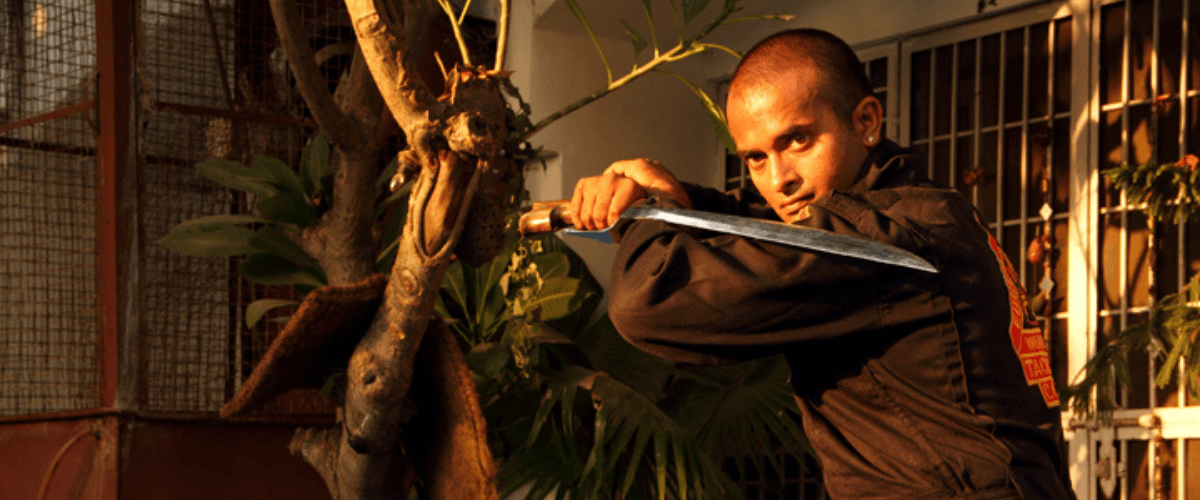
Pekiti Tirsia Kali Weapons
The Weapons of Pekiti-Tirsia Kali: A Deep Dive into Tradition and Tactics
Pekiti-Tirsia Kali is a Filipino martial art known for its expertise in close-quarter combat and weapon-based fighting. A cornerstone of the system is its versatile range of weapons training, both traditional and modern, that provides practitioners with a wide variety of combat tools. Whether it’s the ancient blades of Filipino warriors or the tactical firearms used by today’s military, Pekiti-Tirsia Kali offers a well-rounded approach to self-defense and combat.
Let’s explore the traditional weapons that have shaped the art, along with the modern tactical weapons that bring its principles into the contemporary battlefield.
Traditional Weapons of Pekiti-Tirsia Kali
- Daga (Knife) : The **daga**, or knife, is central to Pekiti-Tirsia Kali’s combative techniques. Training with the dagger sharpens a practitioner’s awareness, reflexes, and precision, as it’s often used in both offense and defense. Mastery of the dagger allows practitioners to apply techniques across multiple weapons and even in unarmed scenarios.
- Sticks (Olisi/Escrima Sticks) : Kali is perhaps most famous for its stick fighting techniques, often employing rattan sticks known as **olisi**. These sticks serve as both training tools and combat weapons, allowing practitioners to develop their striking, blocking, and trapping techniques. Stick fighting lays the foundation for understanding angles and footwork in Kali.
- Ginunting: The ginunting is a traditional Filipino sword used primarily by the Filipino Marines and also within Pekiti-Tirsia Kali. Its curved, slashing design is ideal for close combat. Training with the ginunting is essential for those wanting to master bladed weapons, as its weight and balance offer distinct tactical advantages.
- Karambit: The karambit is a small, curved blade that mimics a tiger’s claw. Used for close combat, this unique weapon excels in quick slashes and hooking techniques. Its unusual design allows the wielder to maintain control of the blade, even during grappling situations.
- Balisong (Butterfly Knife) : Famous for its fast, flipping action, the **balisong** (or butterfly knife) is a traditional Filipino weapon known for both combat and utility. Pekiti-Tirsia Kali practitioners use the balisong for rapid deployment and cutting techniques. Beyond its showmanship, it’s a highly effective close-quarters weapon.
- Sibat (Spear): The sibat, or spear, is one of the longest weapons in Kali’s arsenal. It provides practitioners with reach and power, combining thrusting and striking techniques that can neutralize opponents from a distance. Although not as commonly used today, it’s an important part of Pekiti-Tirsia’s training for mastering all ranges of combat.
Modern Tactical Weapons in Pekiti-Tirsia Kali
As Pekiti-Tirsia Kali evolved, so did the weapons used within the system. Today, the martial art incorporates modern tactical weapons that are frequently used by military and law enforcement personnel. Training with these weapons ensures practitioners are prepared for modern combat scenarios.
Bayonet: The bayonet, a blade attached to the muzzle of a rifle, brings the spirit of traditional blade combat into modern warfare. Training with the bayonet in Kali emphasizes thrusts, slashes, and strikes, as well as transitioning between rifle and blade.
Safety Baton: The safety baton is a key tool in law enforcement, and Pekiti-Tirsia Kali’s baton training builds on the foundational stick techniques. Officers are taught to use the baton for strikes, joint manipulation, and non-lethal control tactics, reducing liability while ensuring effective self-defense.
Tactical Handgun: In the modern age, firearms are a vital part of tactical combat. Pekiti-Tirsia Kali incorporates the tactical handgun into its training, focusing on close-quarters scenarios. This includes rapid drawing, disarming techniques, and retention, ensuring the user can defend against armed attackers or maintain control in a combat situation.
Assault Rifle: Pekiti-Tirsia Kali’s integration of the **assault rifle** prepares military and law enforcement personnel for close-quarters battle (CQB). Techniques focus on weapon retention, transitioning between firearms and melee weapons, and the effective use of the rifle in tight environments. This training maintains the system’s principles of mobility and versatility, even with modern weapons.
Conclusion
Pekiti-Tirsia Kali’s weapons training provides practitioners with a comprehensive skill set that extends from traditional Filipino blades to modern tactical firearms. Each weapon offers unique strategies and techniques that develop mastery over close-quarters combat, giving practitioners the tools they need to adapt to any threat, whether on the battlefield, in law enforcement, or in self-defense scenarios.
The true power of Pekiti-Tirsia Kali lies in its timeless principles—protection from all attacks, destruction of opponents’ weapons, and domination of combat. No matter the weapon in hand, these core tenets remain constant, empowering warriors with the skills needed to survive and thrive in any combat situation.

No Comments